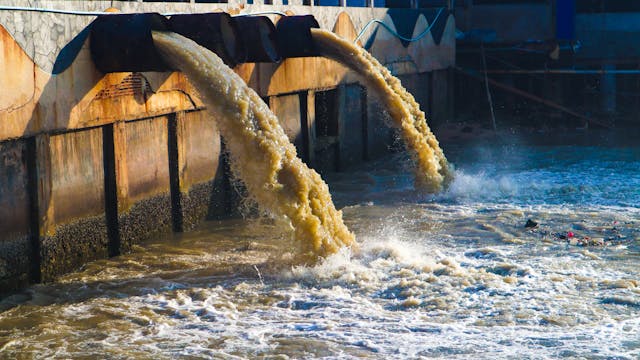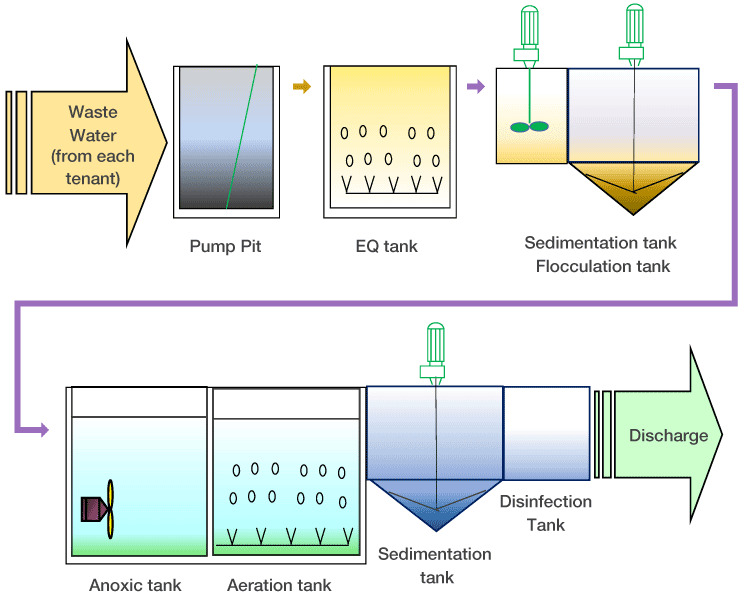Industrial Waste Water Treatment-- Improve Effectiveness with Customized Water Treatment Equipments
Industrial Waste Water Treatment-- Improve Effectiveness with Customized Water Treatment Equipments
Blog Article
Innovations and Developments in Industrial Waste Water Therapy Technologies
The landscape of commercial wastewater therapy is undertaking a transformative change, driven by technologies that boost both performance and sustainability. As regulatory standards evolve, the integration of AI and device knowing into wastewater management systems promises to guarantee and improve operations compliance.
Overview of Drainage Therapy Technologies
Wastewater therapy innovations encompass a variety of techniques developed to remove contaminants from commercial effluents prior to their release into the environment. These modern technologies are essential for keeping environmental balance and ensuring conformity with ecological policies. The main groups of wastewater treatment include physical, chemical, and organic techniques, each offering unique functions based on the nature of the impurities existing.

Biological therapy approaches use bacteria to degrade raw material, making them particularly efficient for organic-rich effluents. Techniques like triggered sludge and biofilm activators harness the all-natural degradation capabilities of microorganisms, bring about substantial decreases in biochemical oxygen need (BODY)
Advanced Filtration Methods
Advanced purification methods stand for a vital development in the world of commercial wastewater therapy, boosting the performance of impurity removal procedures. Industrial Waste Water Treatment. These techniques include a variety of innovations, including microfiltration, ultrafiltration, nanofiltration, and turn around osmosis, which offer sequential barriers for numerous fragment dimensions and chemical structures
Microfiltration and ultrafiltration make use of membrane systems to remove put on hold solids, microorganisms, and bigger organic particles, boosting the quality of effluent before further therapy. Nanofiltration connects the gap between ultrafiltration and reverse osmosis, effectively removing natural substances and divalent ions, therefore reducing the load on downstream processes.
Reverse osmosis provides the highest possible degree of filtration by enabling only water and tiny particles to pass with its semi-permeable membranes, making it excellent for reclaiming high-quality water from industrial effluents. Current improvements in membrane innovation, including the development of more resilient and fouling-resistant materials, have considerably boosted functional effectiveness and minimized costs.
Integrating these advanced filtering strategies not only improves the total treatment process yet also contributes to sustainability initiatives by allowing water reuse and resource recovery in commercial settings. (Industrial Waste Water Treatment)
Organic Treatment Advancements

Moreover, the growth of engineered biological systems, such as membrane bioreactors (MBRs), combines biological therapy with advanced membrane layer filtering. This assimilation permits higher effluent quality and minimized footprint, making index it ideal for space-constrained commercial facilities. Developments in genetically crafted microbes have also emerged, boosting the biodegradation of details contaminants, such as pharmaceuticals and heavy metals, that are commonly challenging to get rid of.
Furthermore, the execution of bioaugmentation techniques, where beneficial microorganisms are presented to boost the existing biological therapy procedures, has actually revealed encouraging outcomes in enhancing treatment performance. These innovations collectively indicate a fad in the direction of more lasting and effective organic treatment approaches that can adapt to the progressing complexities of commercial wastewater streams. As industries continue to prioritize ecological compliance, these biological technologies will play a crucial duty in wastewater monitoring.

Resource Recuperation Methods
In industrial setups, the combination of resource recovery methods has actually ended up being increasingly important for improving sustainability and decreasing waste. These techniques concentrate on drawing out useful materials and energy from wastewater streams, consequently transforming prospective pollutants into reusable sources.
One popular approach is nutrient recovery, where nitrogen and phosphorus, frequently existing over in wastewater, are recorded and exchanged fertilizers. This not only lowers ecological effects but additionally provides a round economic climate option for agricultural applications. In addition, technologies such as anaerobic digestion permit for the conversion of natural waste into biogas, a renewable resource source that can offset nonrenewable fuel source use in industrial operations.
Moreover, advanced filtering and membrane layer modern technologies promote the recuperation of industrial home by-products such as salts and metals. These recovered products can be reintegrated into manufacturing processes, lowering the demand for virgin resources.
Future Patterns in Waste Water Administration
As markets increasingly prioritize sustainability, the future of wastewater monitoring is established to undergo considerable improvements. Technological innovations, such as artificial intelligence and artificial intelligence, will certainly make it possible for more reliable monitoring and administration of wastewater systems. These technologies can anticipate upkeep needs, enhance therapy procedures, and improve decision-making, inevitably decreasing operational costs and ecological influence.
Additionally, the integration of circular economic situation principles will play a critical function in wastewater administration. Industries are anticipated to move in the direction of systems that not just deal with wastewater yet additionally recover important resources, such as nutrients, water, and energy. This transition will certainly minimize waste and advertise the reuse of materials, lining up with worldwide sustainability objectives.
Emerging treatment strategies, such as membrane bioreactors and progressed oxidation processes, will certainly even more improve the efficiency of wastewater therapy, enabling for better effluents ideal for reuse. In addition, regulative structures are most likely to develop, emphasizing more stringent standards for wastewater discharge and encouraging industries to take on ingenious treatment services.
Verdict
In conclusion, the development of industrial wastewater therapy innovations shows a substantial shift in the direction of improved effectiveness and sustainability. Developments in innovative filtering techniques, biological therapies, and source recovery methods highlight the industry's commitment to environmental stewardship. The combination of expert system and artificial intelligence further maximizes these procedures, making sure governing compliance and promoting a round economic climate. Continued innovations in these locations will play an essential function fit the future of wastewater monitoring and safeguarding important water resources.
The landscape of industrial wastewater treatment is undertaking a transformative shift, driven by technologies that boost both efficiency and sustainability.Wastewater treatment modern technologies incorporate a range of methods created to remove impurities from industrial effluents before their release right into the setting.Utilizing the power of biological procedures has led his explanation to substantial developments in the treatment of commercial wastewater.In addition, the implementation of bioaugmentation methods, where valuable germs are presented to enhance the existing biological therapy processes, has actually shown encouraging outcomes in enhancing therapy efficiency. These developments jointly indicate a pattern towards more lasting and effective biological treatment approaches that can adjust to the developing complexities of commercial wastewater streams.
Report this page